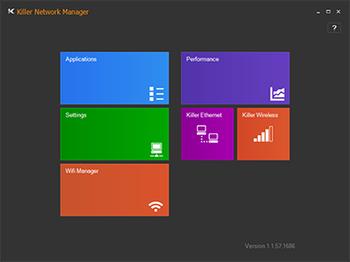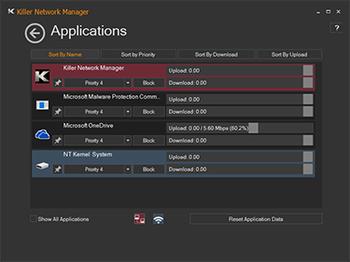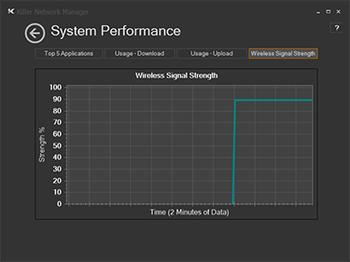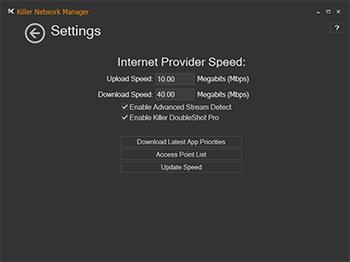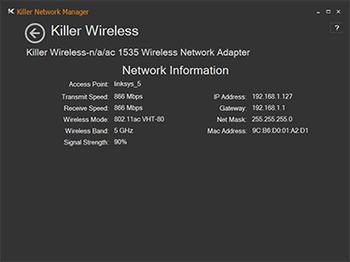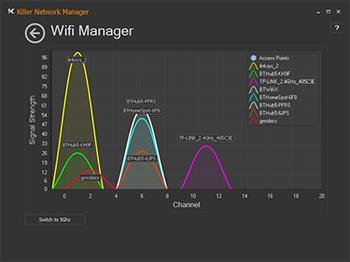Introduction
Have a potential PC upgrade brewing in the back of your mind? We imagine you'd be considering, among other things, a newer CPU, a faster GPU, more memory and a high-speed SSD. These are the pillars of any new build, but hands up, how many of you have given any real consideration to the system network interface controller (NIC)?
The answer, we assume, is not many. And we can see why - network controllers tend to just work, and they're one of those integral components that require no user intervention outside of the occasional driver install. They're frequently supplied by Intel or Realtek, with the former gaining preference based on brand recognition, yet it's usually a case of either one will do.
But would it pay to give the network controller greater consideration? After all, won't practically all of your new PC's usage scenarios revolve around a web connection? The folks at Killer reckon it's time to revisit the NIC and see if there's value to be had in its latest-generation wired and wireless solutions.
The Killer Brand
Right off the bat, Killer faces a challenge in altering the public's perception of its products. Enthusiasts and performance users will have heard of the brand, and will most probably remember the firm's original PCIe expansion cards dating back to 2006.
Fetching over £100 at retail, the firm's initial cards were primarily designed to improve network latency by bypassing the Windows networking stack , but were met with scepticism as reviewers and end users alike struggled to justify the cost.
Since then, Bigfoot Networks, Killer's original parent company, has undergone a series of seismic changes. In 2011 it was acquired by Qualcomm and in 2014, many of the team's primary members made use of the knowledge and facilities available from the Qualcomm relationship to create Rivet Networks.
Now in charge of Killer product development, Rivet Networks claims to be "focused on creating the best possible networking experience for users" and is attempting to win over gamers and power users with two new products: Killer Ethernet E2400 and Killer Wireless-AC 1535.
The Products
What's immediately apparent is that these aren't Killer products as you remember them. First and foremost, the Ethernet controller and wireless adapter are both intended to serve as integrated solutions in today's motherboards and laptops, as opposed to a premium standalone upgrade, and Killer already has plenty of design wins under its belt.
Having the likes of Acer, ASRock Clevo, Gigabyte, MSI and Razer onboard is a good start, yet breaking down the cost barrier is arguably the most important first step and Killer has made significant progress in cost reduction to the end user. Browsing various retailers' shelves suggests that a modern Z170 motherboard with Killer E2400 connectivity should cost, at most, only a few pounds more than a variant with a regular NIC.
That's good to know, and so is the fact that today's Killer solutions are about much more than just reducing latency. At its core, Killer's hardware borrows heavily from existing Qualcomm products and is optimised through drivers and software tuned specifically to minimise latency and increase speed.
Killer claims its latency performance can beat its competitors by as much as 50 per cent, yet while every last morsel of speed is appreciated, it isn't enough to set the E2400 and Wireless-AC 1535 apart. What really makes these products interesting is the way in which they detect and prioritise network traffic.
For a typical NIC, all data packets are treated the same and are whisked away to their destination with minimal fuss. Such an approach works just fine, but the way we utilise data coupled with a huge surge in web traffic suggests that not all packets should be treated equal. After all, if you're on a 25 kill streak, you want your game traffic to have priority over the Windows Update that's about to start in the background, and that's where Killer's software component comes into play.
Intelligent Networking
The E2400 and Wireless-AC 1535 can both be used on a driver-only basis, but in order to take full advantage of the available feature set, users need to consider the free-to-download Killer Network Manager.
Weighing in at around 150MB, the software utility is intended to detect different forms of network traffic and prioritise the websites or applications that are deemed most important. The technology is dubbed 'Advance Stream Detect 2.0' and an obvious usage example is online games, where the amount of data being transferred can be minimal, but speed is crucial and at risk of being compromised by other network activity.
Adding intelligence and control to the network experience, Killer Network Manager is, in our estimation, the key differentiator and serves as a useful method of prioritising latency-sensitive traffic. The software is presented in a logical and simple-to-navigate manner, with all available options split into six separate sections.
The most pertinent is applications (pictured above-right), where the software detects apps with network traffic and prioritises them on a scale of one to six in order of importance. Taking the guesswork out of configuration, Killer maintains an automated list of app priorities that favours gaming, voice calls and multimedia over bandwidth-heavy activities such as torrents.
Automated prioritisation is handy to have, but performance users are going to appreciate the ability to fine-tune applications as they see fit. It's easy to select a manual priority using a drop-down menu, network activity from any app can be blocked entirely at the click of a button, and using simple sliders it's possible to limit an app's upload/download bandwidth to a maximum percentage. Simple, and in case you're wondering, web-browser traffic is prioritised based on what's happening in the active tab - watching a YouTube video, for example, would elicit a higher priority than a Google search.
Who doesn't enjoy looking at network-usage statistics? The System Performance tab has plenty of data to show, including Top 5 Applications and Wireless Signal Strength, however it's disappointing not to be able to tailor the data based on user-defined criteria. You can't, for example, find out which games or websites have consumed the most data over the past month.
Over on the Settings tab it is recommended for the user to enter his/her broadband connection speed in order to assist the software in managing bandwidth. A built-in speed-checker can do a quick calculation for anyone uncertain of their line speed, and there are shortcuts to enable Advanced Stream Detect or Killer DoubleShot Pro, as well as to download the latest app priorities.
What's DoubleShot Pro, might you ask? In systems configured with an E2400 Ethernet port and a Wireless AC-1535 network adapter, DoubleShot Pro allows for both connections to be used together to increase maximum throughput. Sounds obvious, but what's clever is that the tech will automatically place high-priority, latency-sensitive traffic on the fastest and most reliable link.
The software, and indeed the Killer proposition as a whole, has merit. On paper it makes implicit sense for certain network applications to have priority over others. Ever had a Skype call drop out due a torrent that's running in the background? Or how about a movie stream turn into a juddering mess due to a Steam game that's decided to download a 10GB update?
Heck, even a Windows update can these days weigh-in at many gigabytes in size, potentially disrupting whatever network activity is already taking place. Killer's solution is sound, and the good news for users needing to rebuild their trust in the company's products is that the software and drivers appear to be perfectly stable. We've been regularly using the E2400 and Wireless-AC 1535 over the course of the past few weeks without running into a hitch, and the only obvious limitation is the lack of support for operating systems other than Microsoft Windows.
So should a Killer network controller be on your shortlist for a future PC build? To find out, let's take a look at performance and potential real-world benefits.





